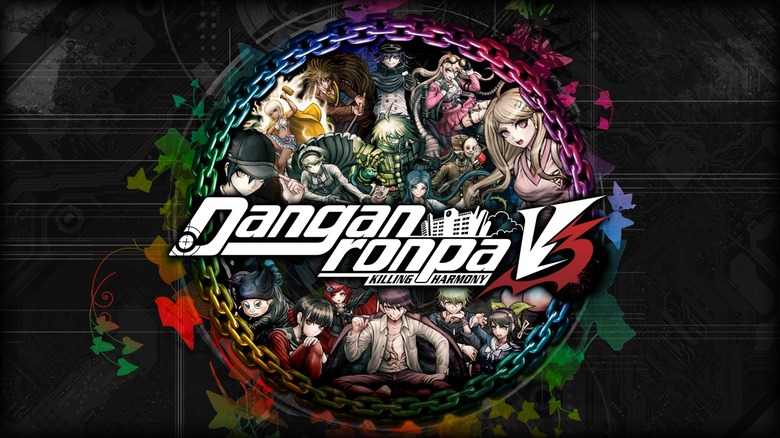'Danganronpa V3: Killing Harmony' Review: The Ultimate Murder Mystery
Danganronpa V3: Killing Harmony is the latest entry in a series of visual novel games about groups of high school students who are forced to kill each other in order to "graduate" from a sadistic, mysterious academy. There are rules to the killing game, but the most important rule is that the student has to quite literally get away with murder to win the game and graduate. If a murder goes unsolved, the murderer (known as the "Blackened") gets to leave, and the rest (known as the "Spotless") are punished. The punishment, in this case, is death.The conceit is reminiscent of other fictional works like Battle Royale or The Hunger Games, but Danganronpa's greatest strength is the underlying mystery upon which the entire series is constructed. I played through the first two Danganronpa games earlier this year, and the unraveling of that mystery has easily been my favorite gaming experience of 2017 so far. But I wouldn't want to ruin that experience for anyone else, so I'm going to avoid discussing the major story beats. Trust me — it's worth seeing this play out in real time for yourself.The opening moments of Danganronpa V3 are reminiscent of the original game. Two high-school aged kids — Kaede Akamatsu and Shuichi Saihara — stumble out of a locker in a classroom, unsure of where they are or how they got there. Kaede serves as the protagonist of V3, as Makoto and Hajime did in the previous two games, though Shuichi also has an important role to play — one which expands as the story progresses.
Once the two get their bearings, they make their way out into the hallway and begin running into others students who are just as confused. They eventually remember that they are all incredibly gifted students with "ultimate" talents, and learn that they have been kidnapped and will be forced to take part in a mutual killing game at the Ultimate Academy for Gifted Juveniles.
Visual novels sometimes struggle when it comes to balancing gameplay and storytelling, but Danganronpa really does feel like a video game. You'll spend a majority of the game wandering around the Ultimate Academy campus, either socializing with and getting to know the other students, or investigating the often convoluted and intricate murders that have taken place.If you've ever played a Danganronpa game (which you absolutely should before you play Killing Harmony, but we'll get to that later), you'll feel right at home in V3. While large chunks of the game are linear (remember, it's a novel), the free roam segments all occur from a first-person perspective. If you find someone you want to speak with, just walk up to them and tap X. The same goes for any interactive elements of the environment.Inevitably, once enough time has passed, the school's headmaster and mascot Monokuma will provide a motive to put all of the students on edge and give them a reason to do something unforgivable. Monokuma, it's worth noting, is a robotic teddy bear with a high-pitched voice who rules with an iron fist. He has played a major role in all three games, but this time, he is joined by the Monokubs: smaller, more colorful bears who each have distinct personalities.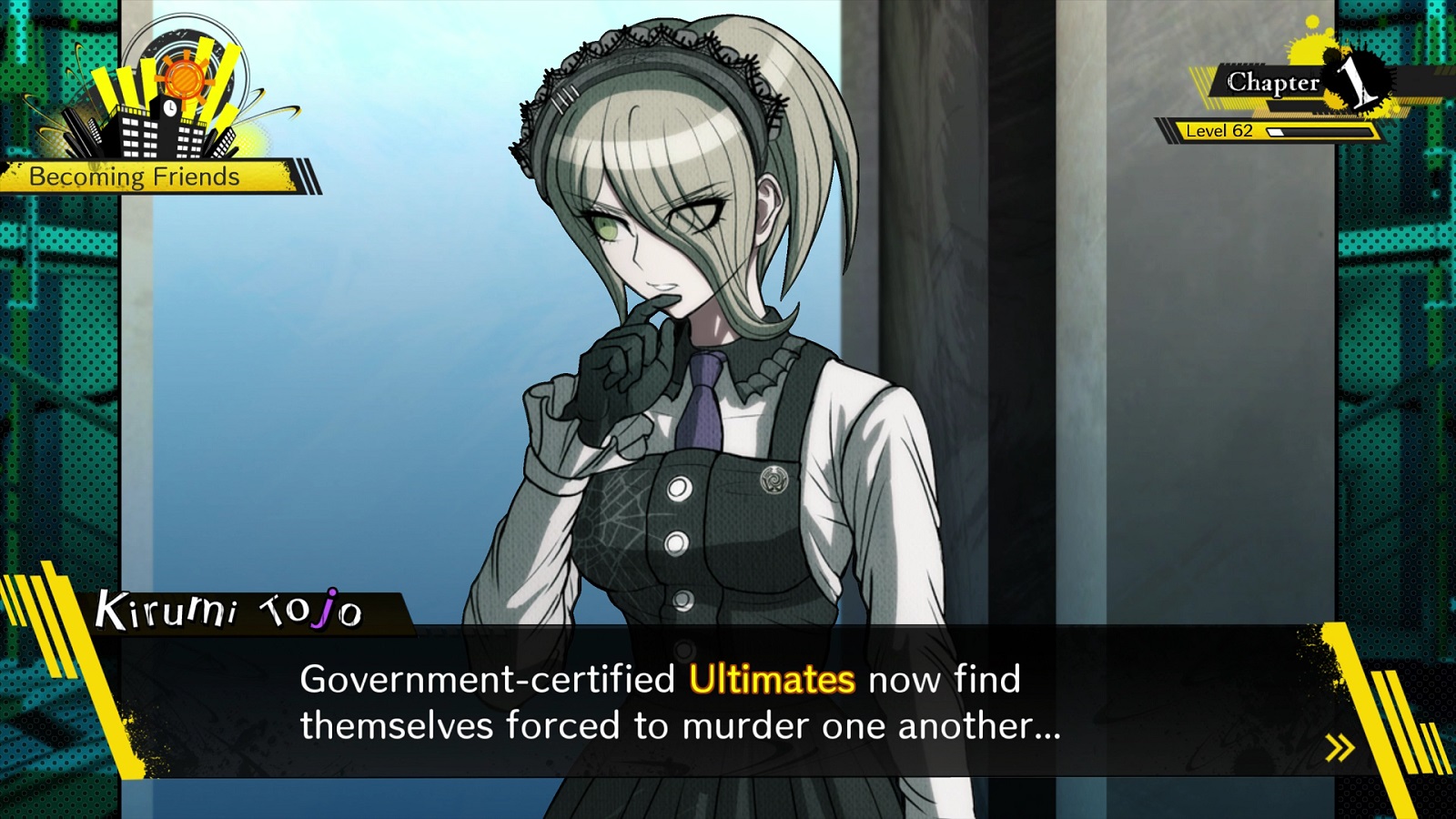 Though they mostly serve as comic relief, it's impossible to avoid talking about them on account of just how much screen time they have. Where Monokuma would could morning and nighttime announcements in previous games, the Monokubs have taken his place, often giving a glimpse into their endlessly bonkers and inexplicable existence. They grew on me, gave me a headache, genuinely shocked me and overall served as adequate foils for Monokuma.Anyway, back to the motives. Like clockwork, and despite their repeated promises to keep one another safe, one of the students eventually snaps and kills a classmate. Once three students see the body, Monokuma's body discovery announcement plays over the academy's various monitors and the students are summoned to the scene of the crime. At this point, the students have a limited amount of time to conduct an investigation, gathering clues and interviewing witnesses in order to build a case.Once Monokuma decides that time has expired, the students all travel to a makeshift courtroom where they have to participate in a class trial in which they determine the identity of the killer. The class trials are the meat of the game, where players are forced to think quickly and act even quicker.
Though they mostly serve as comic relief, it's impossible to avoid talking about them on account of just how much screen time they have. Where Monokuma would could morning and nighttime announcements in previous games, the Monokubs have taken his place, often giving a glimpse into their endlessly bonkers and inexplicable existence. They grew on me, gave me a headache, genuinely shocked me and overall served as adequate foils for Monokuma.Anyway, back to the motives. Like clockwork, and despite their repeated promises to keep one another safe, one of the students eventually snaps and kills a classmate. Once three students see the body, Monokuma's body discovery announcement plays over the academy's various monitors and the students are summoned to the scene of the crime. At this point, the students have a limited amount of time to conduct an investigation, gathering clues and interviewing witnesses in order to build a case.Once Monokuma decides that time has expired, the students all travel to a makeshift courtroom where they have to participate in a class trial in which they determine the identity of the killer. The class trials are the meat of the game, where players are forced to think quickly and act even quicker.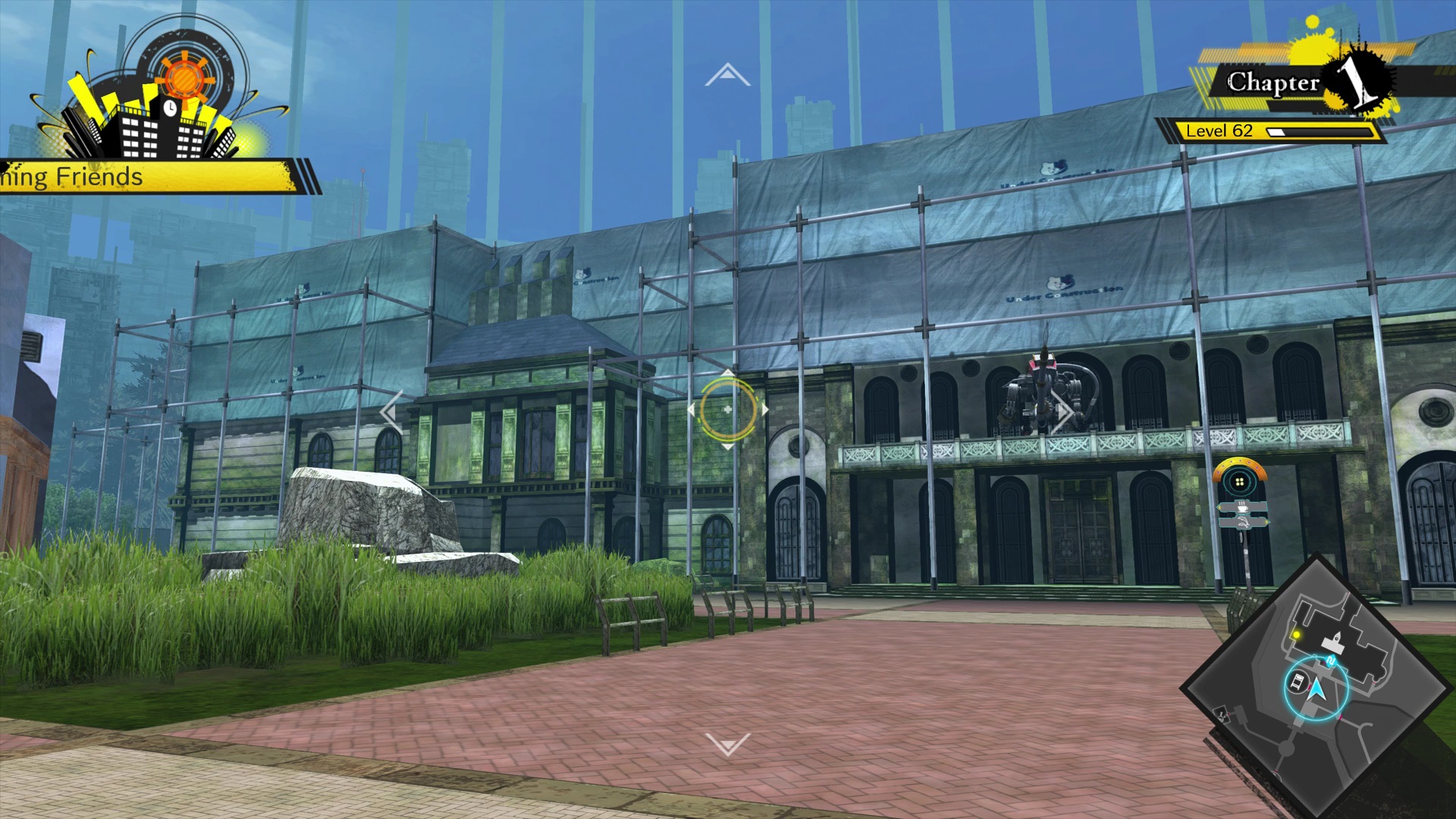 As in the previous games, class trials consist of a series of minigames, each of which push the case forward and add context to the murder. The most common minigame is the Non-Stop Debate, during which all of the surviving students say their piece about a given topic, and the player has to either counter their false statements (or agree with their true ones) but shooting Truth Bullets at lines of text as they pop up on the screen. You have a set amount of bullets to choose from during a Non-Stop Debate, each of which represents an alibi or a piece of evidence gathered during the investigation. If you shoot the wrong bullet at the wrong phrase, you'll lose "Influence" (aka health) and the debate will begin again. The good news is that the stakes aren't all that high, because you can start over from the same place you failed with nothing but a penalty to your final score.While the previous two Danganronpa games each had a few clunkers when it came to class trial minigames, Killing Harmony is surprisingly consistent. The new minigames, such as Mind Mine (in which the player has to break similarly-colored blocks to reveal images) and Psyche Taxi (in which the player drives a car down a road collecting letter blocks to form questions and then answer them by plowing into pedestrians) are both fun and lack the tedium of some of the old minigames. Plus, the new mechanics introduced in Killing Harmony — like the three-way Mass Panic Debates and the ability to turn Truth Bullets into Lie Bullets to steer the conversation back in the direction you want it to go — are interesting twists on the formula.
As in the previous games, class trials consist of a series of minigames, each of which push the case forward and add context to the murder. The most common minigame is the Non-Stop Debate, during which all of the surviving students say their piece about a given topic, and the player has to either counter their false statements (or agree with their true ones) but shooting Truth Bullets at lines of text as they pop up on the screen. You have a set amount of bullets to choose from during a Non-Stop Debate, each of which represents an alibi or a piece of evidence gathered during the investigation. If you shoot the wrong bullet at the wrong phrase, you'll lose "Influence" (aka health) and the debate will begin again. The good news is that the stakes aren't all that high, because you can start over from the same place you failed with nothing but a penalty to your final score.While the previous two Danganronpa games each had a few clunkers when it came to class trial minigames, Killing Harmony is surprisingly consistent. The new minigames, such as Mind Mine (in which the player has to break similarly-colored blocks to reveal images) and Psyche Taxi (in which the player drives a car down a road collecting letter blocks to form questions and then answer them by plowing into pedestrians) are both fun and lack the tedium of some of the old minigames. Plus, the new mechanics introduced in Killing Harmony — like the three-way Mass Panic Debates and the ability to turn Truth Bullets into Lie Bullets to steer the conversation back in the direction you want it to go — are interesting twists on the formula.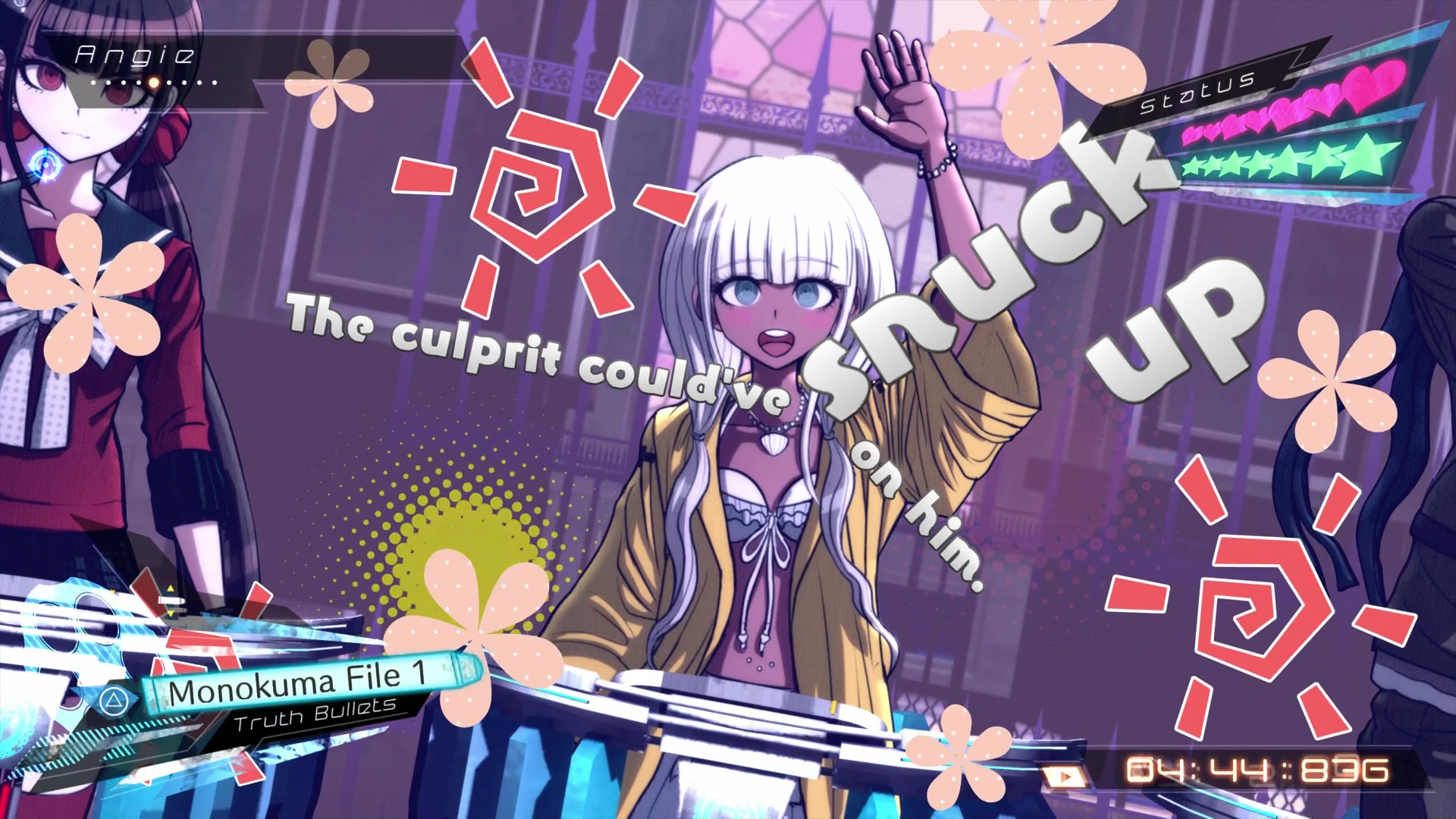 Of course, it wouldn't be a Danganronpa game without a ridiculous, varied cast of characters, and Killing Harmony might feature my favorite cast of the three main entries. Although the main character doesn't bring quite as much to the table this time around, the supporting cast of Ultimate students is as strong as its ever been. Kaito Momota, the Ultimate Astronaut, is hopelessly optimistic, but not cartoonishly so. Kokichi Oma, the Ultimate Supreme Leader, is simultaneously one of the franchise's most sinister characters and one of its funniest. Maki Harukawa, the Ultimate Child Caregiver, is virtually nonexistent in the game's opening hours, but as her role grows and her story unfurls, she becomes one of the game's most memorable characters. And the voice acting, for my money, is as good as its ever been this time around.As the first game built from the ground up with the PS4 in mind, Killing Harmony is also easily the best-looking game in the franchise. The environments are crisp and sharp, as are the character models, which is especially important in a game where you will end up spending 20-30 hours staring at 2D character portraits on a relatively small school campus. True cutscenes are few and far between, but they're also far more intricate and expressive than in the first two games.
Of course, it wouldn't be a Danganronpa game without a ridiculous, varied cast of characters, and Killing Harmony might feature my favorite cast of the three main entries. Although the main character doesn't bring quite as much to the table this time around, the supporting cast of Ultimate students is as strong as its ever been. Kaito Momota, the Ultimate Astronaut, is hopelessly optimistic, but not cartoonishly so. Kokichi Oma, the Ultimate Supreme Leader, is simultaneously one of the franchise's most sinister characters and one of its funniest. Maki Harukawa, the Ultimate Child Caregiver, is virtually nonexistent in the game's opening hours, but as her role grows and her story unfurls, she becomes one of the game's most memorable characters. And the voice acting, for my money, is as good as its ever been this time around.As the first game built from the ground up with the PS4 in mind, Killing Harmony is also easily the best-looking game in the franchise. The environments are crisp and sharp, as are the character models, which is especially important in a game where you will end up spending 20-30 hours staring at 2D character portraits on a relatively small school campus. True cutscenes are few and far between, but they're also far more intricate and expressive than in the first two games.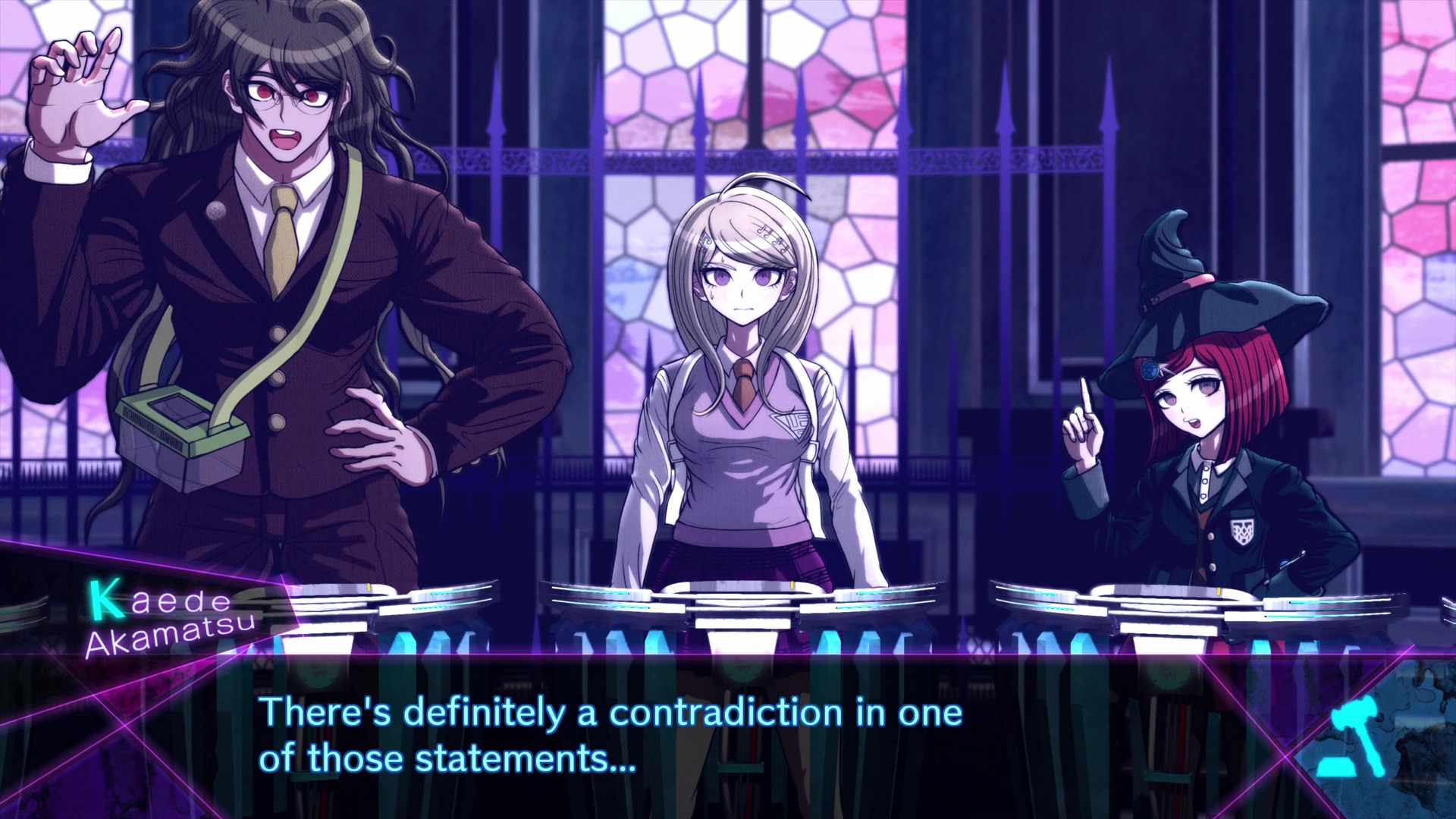 So, every game in the Danganronpa series has taken full advantage of its M rating with over-the-top violence and the frequent use of four-letter words, but Killing Harmony earns its rating as often as it possibly can. Challenging, inappropriate and problematic are all words I'd use to describe some of the conversations that take place over the course of the game, especially when Ultimate Inventor Miu Iruma is involved. In my opinion, as long as a story earns its moments — be they funny, uncomfortable, heart-breaking or cringe-worthy — I'm willing to accept them as part of the creator's vision. For the most part, Killing Harmony does so.But the reason that Danganronpa has become such a phenomenon since the first game launched in 2010 is because it features one of the craziest, most convoluted, engrossing and whiplash-inducing stories ever written for a video game. There are more twists in this series than all the M. Night Shyamalan movies combined, but each and every one of them actually pay off. In order to obtain all the puzzle pieces to fully grasp the implications of Killing Harmony, you need to at the very least play through Danganronpa and Danganronpa 2: Goodbye Despair first. It also wouldn't hurt to watch the (confusingly named) anime, Danganronpa 3: The End of Hope's Peak High School. But if you're willing to put in the time to fully immerse yourself in this insane world, I don't think you'll be disappointed with the payoff. I certainly wasn't.
So, every game in the Danganronpa series has taken full advantage of its M rating with over-the-top violence and the frequent use of four-letter words, but Killing Harmony earns its rating as often as it possibly can. Challenging, inappropriate and problematic are all words I'd use to describe some of the conversations that take place over the course of the game, especially when Ultimate Inventor Miu Iruma is involved. In my opinion, as long as a story earns its moments — be they funny, uncomfortable, heart-breaking or cringe-worthy — I'm willing to accept them as part of the creator's vision. For the most part, Killing Harmony does so.But the reason that Danganronpa has become such a phenomenon since the first game launched in 2010 is because it features one of the craziest, most convoluted, engrossing and whiplash-inducing stories ever written for a video game. There are more twists in this series than all the M. Night Shyamalan movies combined, but each and every one of them actually pay off. In order to obtain all the puzzle pieces to fully grasp the implications of Killing Harmony, you need to at the very least play through Danganronpa and Danganronpa 2: Goodbye Despair first. It also wouldn't hurt to watch the (confusingly named) anime, Danganronpa 3: The End of Hope's Peak High School. But if you're willing to put in the time to fully immerse yourself in this insane world, I don't think you'll be disappointed with the payoff. I certainly wasn't.
NIS America provided BGR with a copy of Danganronpa V3 on the PS4 for the purposes of this review.
